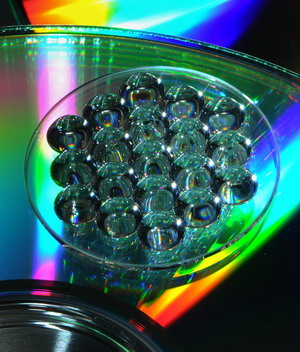Aspherical lenses have a complex shape. This helps to prevent aberrations that are unavoidable with spherical lenses. They are usually produced with the help of multistage CNC grinding processes. To begin with, a lens blank is shaped using grinding processes. Afterwards, it is magnetorheologically polished at SCHOTT up to an accuracy of 0.2 µm PV and finally coated.
Because each blank is processed individually, the lenses are extremely flexible in terms of their design. They can be made of any type of glass, even synthetic quartz glass. The CNC technique is particularly well-suited for manufacturing small to medium-size series with diameters of 12 to 180 mm. In fact, SCHOTT is currently quite active in manufacturing aspheres out of synthetic quartz glass for a variety of different laser applications. “Precision molding, on the other hand, is ideally suited for the cost-effective manufacturing of large series or of small optical components that have complex shapes,” explains Charles Bernheim, Product Manager for Optical Components at SCHOTT Advanced Optics in Mainz. “Here, polished pre-forms made of low TG glass are heated and pressed using a mold having the form of the optical component that should be produced” he adds.
SCHOTT developed the so-called “Low Tg” glasses especially for precision molding. They can be shaped and processed even at a low transformation temperature (Low Tg) by using established machines and molding materials. Due to the higher initial investment necessary for the mold, this process is suited for manufacturing larger quantities.
With precision molding, the typical lens diameter lies between 1.5 and 40 mm. The lens structures can actually be extremely small, yet be formed in a very steep manner. Typical applications of this mass production technique include aspherical lenses for microscopes, cameras or binoculars, but also lens arrays for use in LED lighting.


